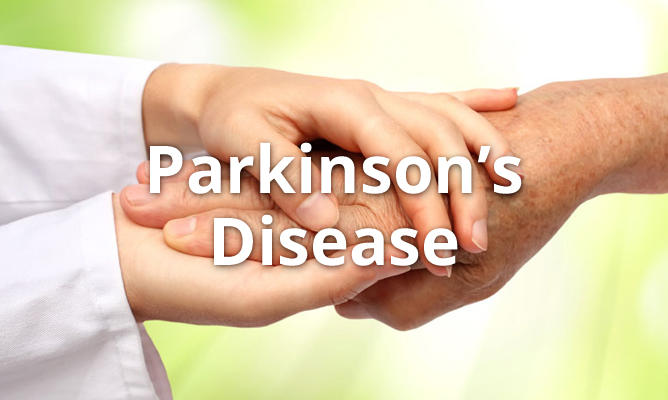Parkinson’s disease is a long-term and progressive disorder that affects the nervous system. This means that it’s something that causes symptoms which tend to worsen as time goes by. There are 3 main symptoms associated with it: tremor, muscle stiffness, and slow movement. Experts say that Parkinson’s may strike middle-aged people and the elderly.
The loss of nerve cells is what causes Parkinson’s disease. In addition, it also leads to the decrease in dopamine, a chemical responsible for the transfer of impulse from one nerve fiber to another nerve fiber, muscle fiber or any other structure. Since dopamine is a role player in regulating body movement, a decrease in its amount causes the symptoms of Parkinson’s disease, which commonly affects middle-aged individuals and those over 50 years of age.
Cure for Parkinson’s disease is currently nonexistent. However, there are a few things that may be done in order have the symptoms managed, as well as to maintain the quality of life of the sufferer. A doctor may prescribe certain medications and recommend supportive treatments such as occupational therapy and physiotherapy. Surgery may be warranted in some instances in order to deal with the symptoms.
Cause of Parkinson’s Disease
Earlier, it is said that this progressive disorder is brought about by the loss of nerve cells. It is in the part of the brain called the substantia nigra where the loss of nerve cells takes place in particular.
The nerve cells in the substantia nigra are responsible for the production of dopamine, which is a neurotransmitter that allows impulses in a nerve fiber to be transmitted to another nerve fiber, muscle fiber, etc. in order to have the various body movements controlled and coordinated. Naturally, movement is affected if there’s a decrease in dopamine.
No one really knows what triggers this loss in nerve cells. Experts believe that it is brought about by a combination of genetic and environmental factors. Faulty genes are being blamed for Parkinson’s disease, and this is the reason why the condition tends to run in families. Exposure to certain chemicals such as herbicides and pesticides are also regarded as contributors to the development of the disease.
Signs and Symptoms
The signs and symptoms of Parkinson’s disease are usually mild at first and develop over time. There are many different ones associated with the disease and the kinds and severity may vary from person to person. Experts say that there are 3 main symptoms which are sometimes referred to as Parkinsonism:
- Tremor – This is uncontrollable shaking of a body part which usually begins in the hand or arm. Also, it occurs when the limb is at rest.
- Muscle stiffness or rigidity – Because of this, the individual with Parkinson’s disease may have a hard time moving around as well as making facial expressions. This may also cause painful muscle cramps or dystonia.
- Slow movement or bradykenesia – It can be challenging for the person to perform everyday task because of movements that are slower than normal. The gait is also affected, which is characterized by small steps and shuffling walk.
There are a few other symptoms associated with Parkinson’s disease. Some of them include balance problems, urinary incontinence, constipation, erectile dysfunction in men, excessive sweating, excessive production of saliva, insomnia, depression, anxiety, and dementia.
Parkinson’s Disease Treatment
There is no known cure available for Parkinson’s disease. There are certain medications that a doctor may prescribe in order to deal with some of the associated signs and symptoms. Sometimes, surgery may be warranted.
Supportive therapies are also beneficial for someone with the condition. Some of them include occupational therapy, physiotherapy, and speech and language therapy. Regular exercise helps relieve muscle stiffness and depression. Similarly, opting for a healthy diet can help in managing the signs and symptoms of Parkinson’s disease.













